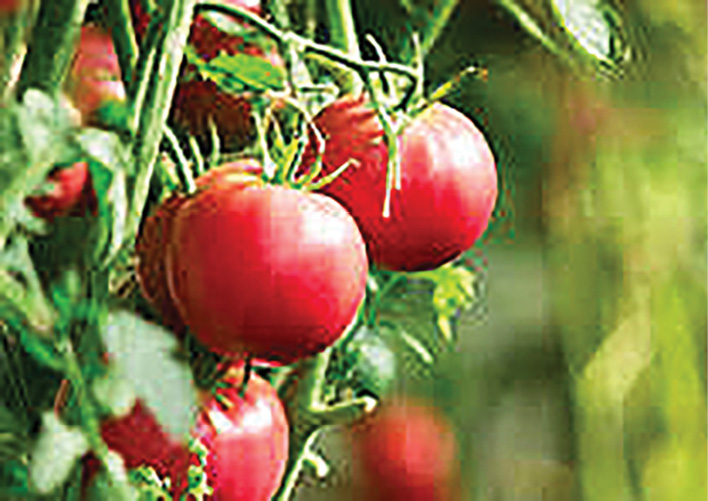We are hot and heavy into our summer season, and our flower and vegetable gardens are bursting with growth and color.

This month, let’s chat about tomatoes. There are many varieties of tomatoes, and soon they will be ready to pick. Many of us experience some difficulty in growing that perfect tomato. Our lush green plants get hit with various problems, such as disease, blossom rot, insects, mold, wilt and blight. To avoid these, start from the very beginning of the planting season.
First, choose a variety of tomato that you like to eat. The beefsteak and beefmaster are great for slicing and perfect for sandwiches. Roma and San Marzano are great sauce choices, and cherry and grape varieties are perfect for salads or just a snack off the vine.
Once you have hardened off your starter tomato plants, be sure to wait until there is no further possibility for frost. Plant your tomatoes in rich, fertilized soil. Plant in an area that receives full sun—at least six to eight hours a day. The more sun, the more flowers on your plant and the sweeter the tomato.
Tomatoes like their space. Don’t crowd them! Airflow is very important to the overall health of your tomatoes. This is why we talk about pruning the lower branches of tomatoes—it increases the airflow at the base of the plant. Densely planted tomatoes create a problem with air circulation that can lead to conditions that attract pests and disease.
Feed your tomato plants all season, they are nutrient hungry. When first planting your tomatoes, a balanced (10-10-10) slow-release fertilizer is the ideal choice. But once the plant has reached maturity, starts flowering and produces fruit, a fertilizer higher in phosphorus and potassium (5-10-10) is recommended. This will help the plant produce more flowers and direct its energy into turning those flowers into fruit.
Finally—water correctly. Do NOT overwater. Water your tomatoes slowly and deeply. Ideally, you can set up a drip system in your garden. Turn it on in the morning for a few hours and happily go about the rest of your day. If a drip system isn’t possible, or if you’re planting in containers, use a slow-flow hose. This will allow you to deeply water your plants without creating unnecessary runoff.
No matter how you water your tomatoes, be sure to do so at the base of the plant. One of the biggest mistakes new gardeners make is to water the leaves. This can cause several problems, including pest attraction, leaf burning and disease. Instead, focus your watering on the soil around the plant so the roots receive the water they need.
Pro Tips
• Only water in the mornings and try to avoid wetting the leaves.
• Water your tomatoes less once fruit begins to set. Watering too much at this stage can cause the fruit to crack. Plus, your fruit will be sweeter with less water.
Best of luck with your vegetable and flower gardens this summer—may all your tomatoes be sweet and delicious. Following these simple steps should help you achieve your best tomatoes this season and many seasons to come.